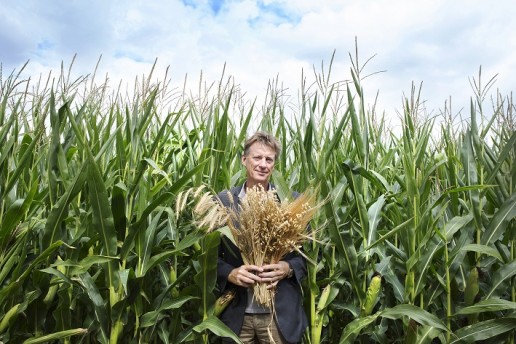Blog: Lessons in carbohydrates - sugar on food labels
In this blog series on carbohydrates, Professor Emeritus Fred Brouns gives us the facts on this much-discussed nutrient. In this post, he delves deeper into the question of how we consumers can figure out which sugars are added and which ones are natural.
Food packaging is required to contain a list of ingredients. This list tells you which sugars have been added as ingredients. Manufacturers are obliged by law to specify every single type of sugar. For instance, if both lactose (sugar from dairy) and fructose (sugar from fruit) are added to a product, both have to be specified in the ingredients list. Alongside this list, the nutritional declaration provides information about a product's total carbohydrate content, and what percentage of this is sugar.
In other words, a food's total sugar content is always stated on the label. If this seems complicated, here are two examples to clarify. Nutella: according to the nutritional declaration, 100 grams of Nutella contains 57.6 grams of carbohydrates, of which 56.8 grams are sugars. In the ingredients list, 'sugar' is the very first ingredient, which means the product contains more sugar than anything else. All the other ingredients listed are not sources of sugar, with the exception of skim milk powder, which adds 0.8 grams of lactose. Conclusion: the lion's share of the sugar in Nutella is added granulated sugar.
Now for an example that is a little more complex: Hero strawberry jam. The list of ingredients reads: strawberries (50%), sugar, glucose syrup, citric acid and gelling agent (pectin). In terms of weight, strawberries are the main ingredient, followed by sugar (granulated sugar) and glucose syrup (made from starch). The sugar-containing ingredients are the strawberries, which contain natural sugars, plus two sources of added sugar. The nutritional declaration states that 100 grams of jam contains 55 grams of carbohydrates, of which 47 grams are sugars. That equates to 47 grams of monosaccharides and disaccharides and another 8 grams of carbohydrates from other forms of sugar. The tricky thing about this example is that we don't know how much of the total sugar content is natural, and how much is added. Getting that information on the package would require a change in labelling legislation.
By: Prof. dr. Fred Brouns, Professor Emeritus Innovation Healthy Food Maastricht UMC+
This blog was previously published on www.nederlandvoedselland.nl and www.gezondidee.mumc.nl.

Also read
-
Nick Bos, Vice-President of the Executive Board of Maastricht University, has been honoured with the Sign of Merit from the city of Maastricht. He received the award on 6 June from Deputy Mayor Hubert Mackus in recognition of his significant contributions to the university and to Maastricht. Nick...
-
On 8 May 2024, the Globalisation & Law Network hosted a seminar featuring Elies van Sliedregt, Professor of Criminal Law and Procedure at Tilburg University.
-
Maastricht University takes care of many distinctive buildings and art works that we all know. By giving them a new purpose, we preserve these icons and give them a new meaning, making them the vibrant heart of a bustling city.
Did you know that these buildings and art works also provide access to...


